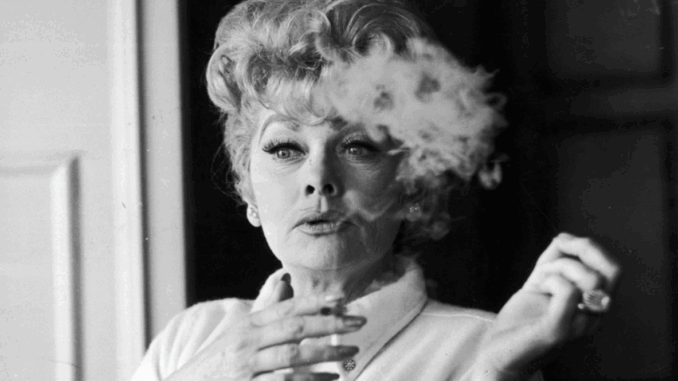
In the early 1950s, American television operated under strict moral codes. Certain subjects were considered too risqué for the small screen — and pregnancy was one of them. Networks believed even mentioning it implied intimacy, something they thought audiences shouldn’t be reminded of.
Yet, in 1952, I Love Lucy — then the most popular sitcom in America — dared to defy that unwritten rule. Led by Lucille Ball and Desi Arnaz, the show not only acknowledged Ball’s real-life pregnancy, it wove it into the storyline in a way that would change television history.
A Word They Couldn’t Say
At the time, CBS and the show’s sponsor, Philip Morris, refused to allow the word “pregnant” to be spoken on air. It was considered too direct, too improper. Instead, polite euphemisms like “expecting” or “in a family way” were the norm.
When Lucille Ball became pregnant with the couple’s second child, network executives initially wanted to hide it on screen — positioning her behind couches, kitchen counters, or large props, as was common practice in Hollywood.
Desi Arnaz’s Bold Stand

Desi Arnaz wasn’t having it. He pushed for Lucy’s pregnancy to be part of the story, arguing that it was both natural and relatable to millions of American families.
According to television historians, Arnaz even appealed directly to Philip Morris’s chairman, making it clear that I Love Lucy was the number-one show in the country — and that audiences would embrace the truth rather than shy away from it. Eventually, he won the battle.
“Lucy Is Enceinte” — The Clever Workaround
Because the word “pregnant” was off-limits, the writers got creative. The episode announcing Lucy Ricardo’s news was titled “Lucy Is Enceinte”, using the French word for “pregnant.”
Scripts for the pregnancy arc were vetted by a priest, a rabbi, and a minister to ensure nothing could be considered indecent. What could have been a potential controversy was handled with warmth, humor, and dignity — exactly the style that had made the show a hit.
A Historic TV Moment
The storyline ran through several episodes, culminating in “Lucy Goes to the Hospital” on January 19, 1953 — the same day Lucille Ball delivered her real-life son, Desi Arnaz Jr., via a scheduled C-section.
The episode drew an audience of 44 million viewers, about 72% of all U.S. households with a television, making it the most-watched broadcast up to that point — even surpassing President Dwight D. Eisenhower’s inauguration the next day.
Why It Mattered
By portraying Lucy’s pregnancy on-screen, I Love Lucy broke ground for realism in sitcoms. It proved that audiences could handle — and even celebrate — storylines reflecting everyday life. The show’s success set a precedent for future television, opening the door for family comedies to tackle real-world milestones.
A Legacy Still Felt Today
Lucille Ball’s willingness to merge her personal life with her character’s life made television history. The laughter, love, and relatability of the pregnancy episodes helped cement I Love Lucy as more than just a sitcom — it became a cultural touchstone.
In the end, what could have been hidden was instead celebrated, and a supposed taboo became one of the most memorable arcs in television history.
